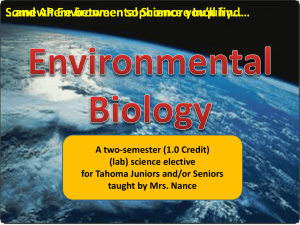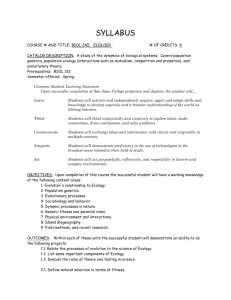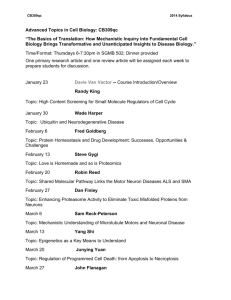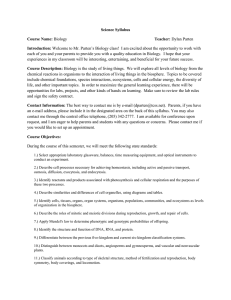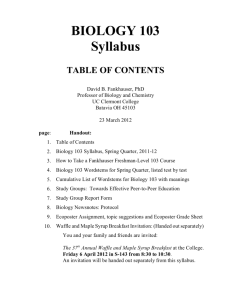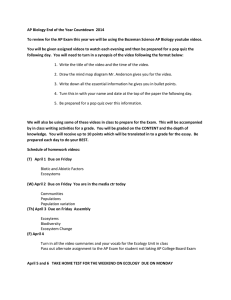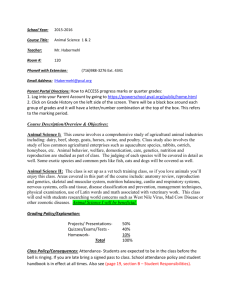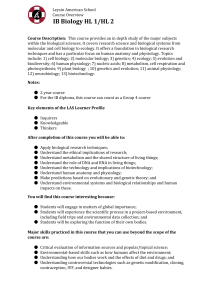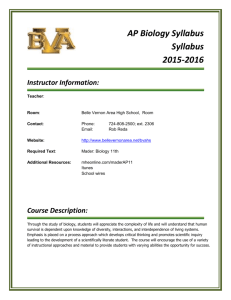BIO 112
advertisement
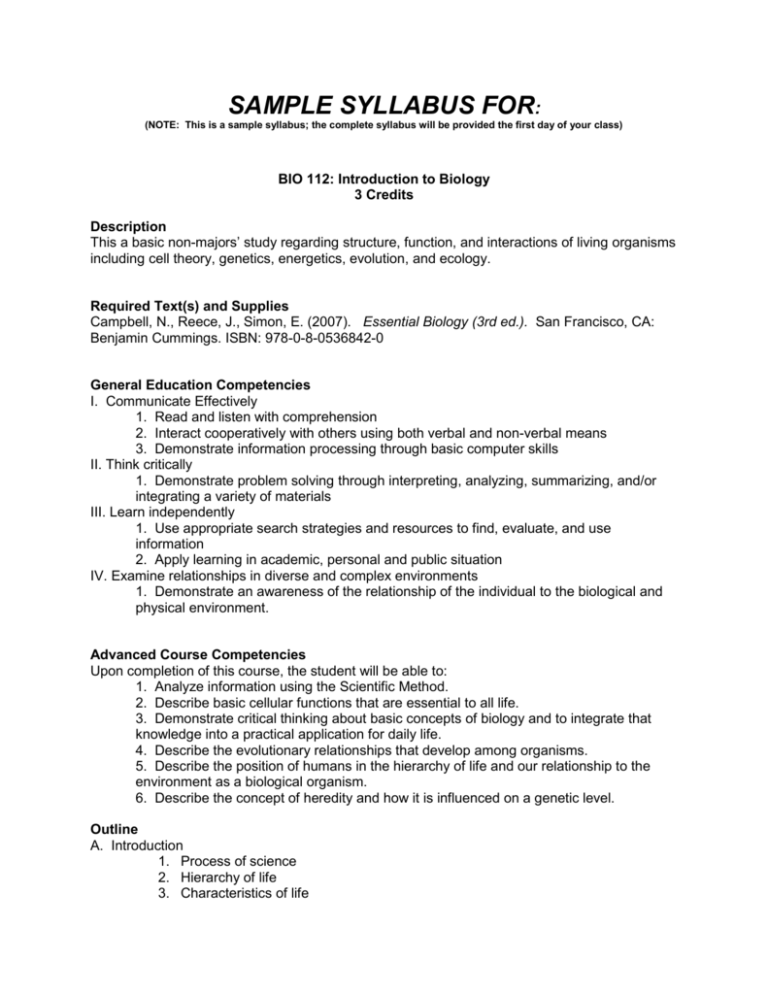
SAMPLE SYLLABUS FOR: (NOTE: This is a sample syllabus; the complete syllabus will be provided the first day of your class) BIO 112: Introduction to Biology 3 Credits Description This a basic non-majors’ study regarding structure, function, and interactions of living organisms including cell theory, genetics, energetics, evolution, and ecology. Required Text(s) and Supplies Campbell, N., Reece, J., Simon, E. (2007). Essential Biology (3rd ed.). San Francisco, CA: Benjamin Cummings. ISBN: 978-0-8-0536842-0 General Education Competencies I. Communicate Effectively 1. Read and listen with comprehension 2. Interact cooperatively with others using both verbal and non-verbal means 3. Demonstrate information processing through basic computer skills II. Think critically 1. Demonstrate problem solving through interpreting, analyzing, summarizing, and/or integrating a variety of materials III. Learn independently 1. Use appropriate search strategies and resources to find, evaluate, and use information 2. Apply learning in academic, personal and public situation IV. Examine relationships in diverse and complex environments 1. Demonstrate an awareness of the relationship of the individual to the biological and physical environment. Advanced Course Competencies Upon completion of this course, the student will be able to: 1. Analyze information using the Scientific Method. 2. Describe basic cellular functions that are essential to all life. 3. Demonstrate critical thinking about basic concepts of biology and to integrate that knowledge into a practical application for daily life. 4. Describe the evolutionary relationships that develop among organisms. 5. Describe the position of humans in the hierarchy of life and our relationship to the environment as a biological organism. 6. Describe the concept of heredity and how it is influenced on a genetic level. Outline A. Introduction 1. Process of science 2. Hierarchy of life 3. Characteristics of life B. The Cell 1. Eukaryotes & prokaryotes 2. Subcellular structure 3. Cell division: mitosis C. Biochemistry 1. Carbohydrates 2. Lipids 3. Proteins 4. Nucleic acids D. Bioenergetics 1. Metabolism 2. Cell respiration 3. Photosynthesis E. Genetics 1. Mendel’s laws and variations 2. Meiosis 3. Mono-hybrid and di-hybrid cross F. DNA 1. Structure 2. Replication 3. Protein synthesis 4. Regulation G. Biotechnology H. Taxonomy 1. 3 domains I. Ecology 1. Ecosystems, biomes J. Evolution 1. Darwin 2. Natural selection & populations
